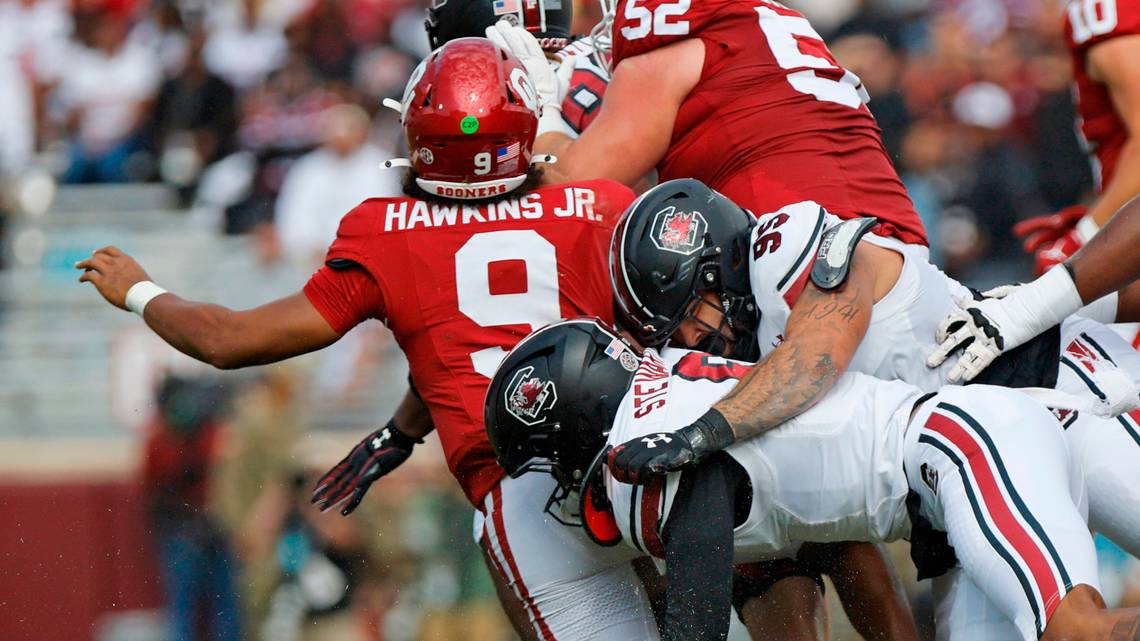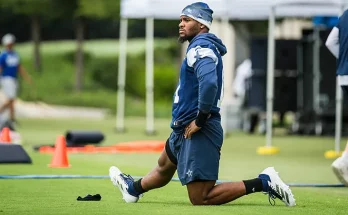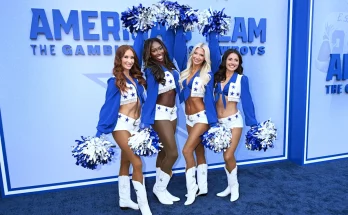South Carolina’s football program has always prided itself on physicality and defensive grit, hallmarks that have helped the Gamecocks punch above their weight in a competitive Southeastern Conference. But as the 2025 season looms, there’s a looming question in Columbia: can South Carolina’s defense remain elite despite experiencing one of the most dramatic offseasons of roster turnover in recent memory?
The 2024 season showcased flashes of brilliance for the Gamecocks on defense. They ranked respectably in total defense, played stout against the run at times, and came up with timely stops that helped secure key wins. It wasn’t a dominant unit across the board, but it was one that improved steadily and proved capable of frustrating even some of the SEC’s most explosive offenses. That progress, however, came under the guidance of a unit filled with veteran leadership, experienced linebackers, and a battle-hardened secondary. Many of those cornerstone players are now gone.
The departure list reads like a who’s who of Carolina defenders: a senior-laden defensive line anchored by NFL-bound talent, a middle linebacker who led the team in tackles, and two starting safeties who provided both athleticism and veteran savvy on the back end. Add in the transfer portal exodus and the reality sets in—the Gamecocks will enter 2025 with a defense that looks far different than the one fans grew to trust last fall.
That doesn’t mean the cupboard is bare. Far from it. Head coach Shane Beamer and defensive coordinator Clayton White have quietly built depth over the past few recruiting cycles, leaning heavily on a mix of high school talent, junior college plug-ins, and now a new wave of portal additions. Yet depth on paper is not the same as chemistry on the field. The SEC demands more than just raw potential; it demands resilience, experience, and unity—traits that are hard to find when you’re constantly reshuffling pieces.
The defensive line, long a point of pride for the Gamecocks, is now a question mark rather than a sure strength. Losing a disruptive presence like edge rusher Tonka Hemingway, who could bend the edge and pressure quarterbacks consistently, leaves a noticeable void. South Carolina is hopeful that former blue-chip recruit Desmond Umeozulu will step into a larger role, but banking on breakout seasons is always risky. The trenches are unforgiving, and without solid interior play, no defense can function properly. The Gamecocks are betting on a rotation of young linemen and transfers to hold the fort, but it’s unclear if that group can match last season’s production.
Linebacker play will be another area under scrutiny. With the graduation of their leading tackler and defensive play-caller, the Gamecocks are searching for someone to emerge as the new quarterback of the defense. Sophomore Grayson “G.G.” Howard, who showed promise in limited snaps last year, could be poised to take the reins. Still, his growth curve must be steep, and mistakes will be magnified in a conference that feasts on defensive breakdowns. South Carolina has also brought in a veteran transfer from the Big Ten to bring maturity and physicality, but whether that’s enough to replicate the leadership vacuum left behind remains to be seen.
The secondary faces perhaps the most significant transformation. Gone are the savvy, ball-hawking safeties who covered up mistakes and blew up screens with equal ferocity. What remains is a group heavy on speed but light on game experience. The coaching staff is high on redshirt freshman Malik Stewart, a rangy athlete with a nose for the ball, but throwing him into the deep end against SEC passing attacks could be trial by fire. The cornerback room still boasts DQ Smith, a lockdown defender who can match up with most SEC receivers. His leadership will be critical, not only on the field but in the locker room where cohesion is forged.
While the individual parts of South Carolina’s defense are intriguing, the real test will be how well they gel. Defensive success is often about anticipation, trust, and reaction. Can the new starters learn the scheme quickly enough to avoid mental lapses? Can they communicate under pressure when the crowd is roaring and tempo offenses are coming at them in waves? These aren’t just tactical questions—they’re psychological ones.
One factor working in South Carolina’s favor is continuity in the coaching staff. Clayton White enters his fifth season as defensive coordinator, and his scheme—built on aggressive fronts, versatile coverages, and opportunistic blitzes—remains consistent. That consistency could be the glue that holds the unit together in the early going. White has a reputation for maximizing the talent at his disposal, often doing more with less. If he can mold this young unit into a cohesive force, it’ll be a testament to his system and leadership.
Another advantage? A favorable early schedule that allows the defense to find its rhythm. Unlike years past where the Gamecocks opened against a juggernaut, 2025 kicks off with a more manageable slate. Games against non-conference opponents provide an opportunity for live reps, film corrections, and lineup experimentation. By the time SEC play rolls around, the hope is that South Carolina’s defense will have developed its identity—one based less on names and more on execution.
Still, the challenge is real. The SEC is not a league that gives defenses time to settle in. High-powered offenses at Georgia, LSU, Tennessee, and even upstart teams like Kentucky and Missouri will relentlessly test any weaknesses. One missed assignment, one mistimed blitz, and games can spiral out of control. The margin for error is slim.
That’s why leadership will matter even more than talent. Veterans like DQ Smith, nose tackle TJ Sanders, and graduate transfer linebacker Noah Spencer must become vocal anchors, setting the tone in the locker room and holding younger players accountable. Leadership isn’t just about fiery speeches—it’s about film study, discipline, and setting the right example when no one’s watching.
There’s also the emotional aspect to consider. South Carolina fans are passionate, loyal, and hungry for sustained success. The 2024 defense gave them hope that the program was turning a corner. Maintaining that defensive identity is about more than just stats—it’s about pride. If this new group can feed off that energy, use doubt as fuel, and embrace the pressure rather than shrink from it, they might not just survive the roster turnover—they might thrive in it.
In the end, the 2025 season for South Carolina’s defense isn’t just about stopping the run or generating sacks. It’s a broader test of resilience, adaptability, and belief. Can this retooled unit hold its ground in the face of adversity? Can young players grow up fast and step into the massive shoes left behind? Can the system and culture instilled by the coaching staff prove stronger than the churn of roster turnover?
If the answer to those questions is yes, then the Gamecocks may find themselves once again among the SEC’s defensive elite. But if cohesion eludes them and growing pains linger, 2025 could be a step back in the defensive arms race. One thing’s for sure: in the high-stakes world of SEC football, no challenge is ever small—and no excuse is ever enough.
The stage is set, the lights are bright, and the doubters are many. Now it’s time to see whether South Carolina’s defense will reload—or regress.



